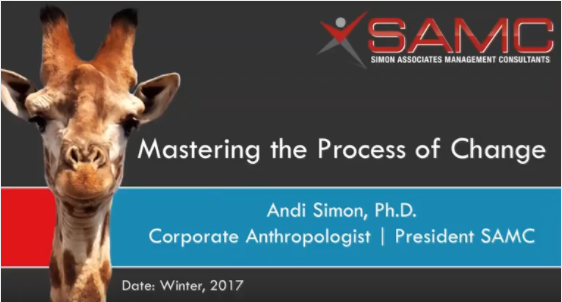For years, I opened my CEO workshops with this question:
“Are you an innovative leader helping your company remain competitive in a fast-changing business environment?”
As soon as I asked it, every hand would go up. However, when I asked for a success story about an innovation or a product improvement, I would only hear stuttering and stammering.
Eventually I realized that executives raise their hands because they want to be seen as innovators, but the reality was that they were long on promise and short on performance. I don’t fault these leaders—their hearts are in the right place. We all want to be innovators, but when it comes to making it happen, we often falter.
What’s the innovation problem?
We see examples of extremely innovative corporations, like Apple, Amazon, Uber and Google, but they are notable because they are not the norm. The norm is that corporations are good at a few core things, but when the market changes, they are slow to respond—and often aren’t able to respond at all. Maxwell Wessel wrote a great article in HBR literally titled “Why Big Companies Can’t Innovate.”
As a corporate anthropologist, companies usually call me in when they are going through one of these crises, so I have the good fortune and tremendous challenge of working with smart executive teams right at the moment when the things that have worked so well for them in the past aren’t working so well any more.
Over decades of doing this kind of work, I have seen many reasons firsthand that stand in the way of innovations. Here are a few of the themes I see over and over:
1. Ingrained Corporate Culture: Companies inevitably develop an internal culture as they grow, and that culture supports the core of their business. Often, building this kind of “insider”culture is a key component of strengthening the core business, and it is part of what made the company strong in the first place.
However, when that core business needs to react to the market and change, the default is to the status quo, when what it actually needs to do is to shift to innovation. In a corporation with an ingrained culture, new ideas have rarely been encouraged because they would have distracted from the core business growth. There is usually no infrastructure for risk-taking “intrapreneurs.” And while that can make a large organization more stable in good times, that strength quickly turns to weakness when a crisis hits that requires change.
2. Human Resistance to Change: It is natural for us as humans to resist change. This happens as much in corporate life as it does in our personal lives. Change is hard, and it presents a lot of unknowns. At SAMC, we see this a lot in family firms, where management teams are instinctively protective of the founding ideals and original business model, plus they want to protect their own role in the company.
Case in point: Did you know that 90% of U.S. companies operate as family firms but only around 30% of all family-owned businesses survive to the second generation (and just 12% to the third, and 3% to the fourth)? That’s why building in a structure for uncovering ways to innovate and grow, such as corporate anthropology, is critical not just to growth, but to survival.
3. Asking for Help is Hard: Leaders at the highest level have the same problems many of us have—asking for help. This is multiplied by the pressures of being a leader and the ego that comes with being in charge, not to mention the silo thinking that inevitably happens when leaders get isolated into a loop of conversations with the people they know and have worked with for years.
Indeed, when we humans see problems or challenges arise, we tend to try to work harder, but there’s a limitation there—we can only do more of what we already do, which isn’t the answer. What’s needed is a fresh approach. In fact, running on the same hamster wheel but faster can often make the problem worse.
4. Leadership Skill Sets: The fact is, executives often get to where they are by being good at what their company does best, and by rising to the top of the management ranks. They know a lot about how to run a company, but not much about how to change it. And why should they? The skill set for running a large company focuses on keeping the success going, not on trying new things when there’s no need to.
Entrepreneurs and startup founders, on the other hand, are often fantastic innovators and far more open to change. They have to grapple with multiple obstacles every day, and need to see and act on opportunities that others miss. Often the founders and the entrepreneurial spirit with which they started their business are long gone by the time the company is in a position to need that kind of innovation again. It therefore usually falls to the present leadership team with a managerial skill set to lead innovation in a crisis, and that’s not the natural default.
How can leaders overcome these issues and do what needs to be done?
Change needs to be “something we do here,” all the time and as part of your company culture, not something you avoid until there is a crisis. To learn how to do this, a great place to start is with these blogs and podcasts:
- Blog: Managing Change in Fast-Changing Times
- Blog: Change: Are You Going To Avoid It Or Embrace It?
- Podcast: Change can be hard
- Podcast: Dudley Slater—Fusion Leadership
Want more? Check out this webinar.

For help adapting to today’s fast-changing times, give us a call.
At Simon Associates Management Consultants, we specialize in helping businesses adapt to the changes of today and tomorrow by stepping out and seeing their organizations with fresh eyes. This is when new opportunities present themselves, when you have the eyes to see them. To learn more about how our change process can put you on the path to growth, please contact us for a $100 1-hour consultation. We’ll help you discover what new possibilities might be waiting for you.
From Observation to Innovation,

Andi Simon, Ph.D.
Corporate Anthropologist | President
Simon Associates Management Consultants
Info@simonassociates.net
@simonandi
Check out my latest Huffington Post article



